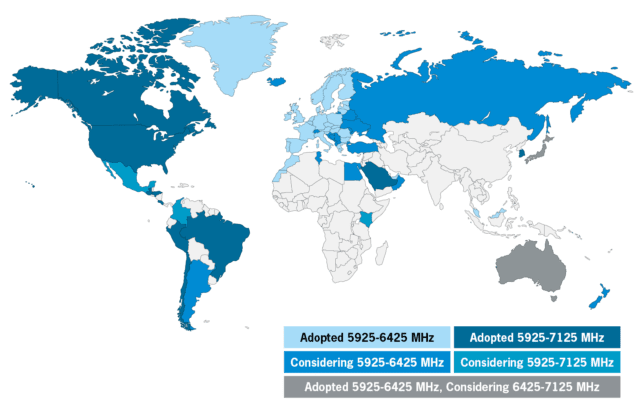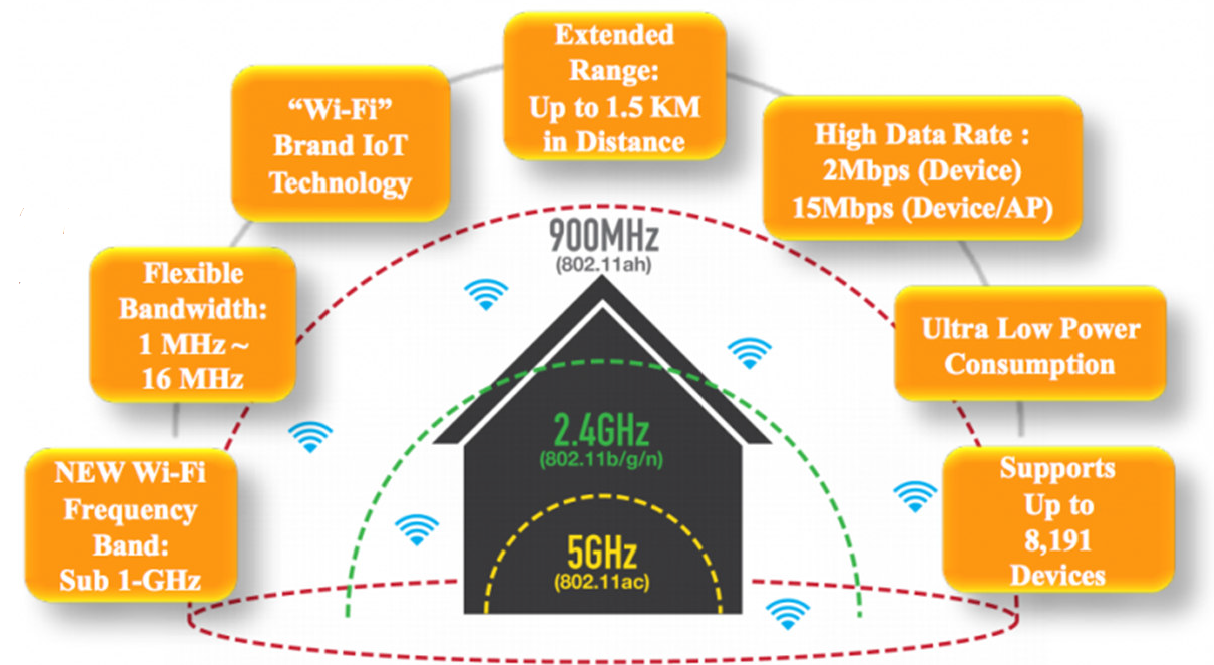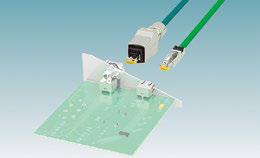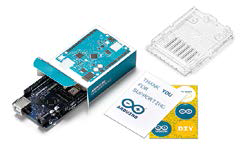Fit to meet current and future requirements
The latest Wi-Fi standard (Wi-Fi 6) and its extension (Wi-Fi 6E) promise high data transmission speeds, higher capacity and low latency, even in environments with many network subscribers. These advantages create numerous new application options and areas of use, but also give rise to new requirements.
Article written by Kerstin Nasser, Corporate Product Manager Wireless at Rutronik
The much-mentioned refrigerator that “automatically orders” food has not caught on, but many other smart appliances have, such as washing machines that confirm to their owners that their clothes are ready by sending a message to their mobile phone. This is possible thanks to Wireless, one of the best known and used wireless technologies. More and more devices offer a Wi-Fi interface and not only in the sector of the home automation – smart homes. Wifi is also making its way into industrial environments through applications such as mobile robots, crane systems, automatic guided vehicles (AGV) or even security and protection systems and the connection of sensors in networks of production lines. Virtual reality applications and games, as well as chargers (wallboxes) of electric vehicles (EVs) also benefit from this wireless technology.
New areas of application also place new requirements on the technology and despite the growing number of subscribers to the Wi-Fi network, users expect a stable network connection. This is the reason why the Wi-Fi Alliance announcement is developing new standards. Since the first protocol appeared IEEE 802.11 en 1997, data throughput has improved considerably with each new Wi-Fi standard.
However, this time the Wi-Fi Alliance has not only optimized the technology, but also the name: Wi-Fi 6 and Wi-Fi 6E (E = enhanced/extended – enhanced/extended) replace the title “complicated” IEEE 802.11ax. Older standards have also been given new names: IEEE 802.11ac is now called Wi-Fi 5 and IEEE 802.11n becomes Wi-Fi 4.
Technically speaking, Wi-Fi 6 and Wi-Fi 6E offer a large number of improvements:
- OFDMA (orthogonal frequency division multiple access – orthogonal frequency division multiple access): OFDMA is an extension of the method OFDM used in Wi-Fi 5 technology. Although only one data packet can be transmitted to a single terminal in a given time window when OFDM is used, OFDMA allows the sending multiple data sets to multiple terminals in the same data packet. This translates into increased data rate efficiency and a significant reduction in network latency.
- 1024-QAM (quadrature amplitude modulation – quadrature amplitude modulation): Compared to Wi-Fi 5, which employs the modulation method 256-QAM, now 1024-QAM allows increase data throughput by 25 percent with Wi-Fi 6. Thanks to 1024-QAM, it is possible to transmit a total of 10 bits, whereas with 256-QAM, only 8 bits can be sent. This is a very important advantage in those environments characterized by a high density of WLAN terminals as it happens, for example, in train stations or large events.
- MU-MIMO (Multi-user - multiple inputs, multiple output – multi-user – multiple input and multiple output). By separating the available bandwidth into separate spatial streams, multi-antenna communication can be accomplished between an access point and multiple devices, both for downlink (downlink) as for the ascendant ( uplink). With Wi-Fi 5, this only works for the downlink. As a result, Wi-Fi 6 gets reduce network latency and increase stability.
- TWT (target wake time – destination wake-up time): TWT “wakes up” network subscribers to be able to transmit data only at specific times. The rest of the time, the devices “sleep” and therefore require less power. This too prevents interference in network communication, since “sleeping” subscribers do not send data and do not block communication flows either – a decisive plus point, especially in industrial automation systems with many sensors.
- BSS color (basic service set – basic service set): To each BSS, consisting of an access point and clients, it is assigned a “color” (ie a number) as soon as there is another BSS in its vicinity. Therefore, signals from another network can be detected and ignored. This allows more efficient use of flows and improves streaming quality.
- Safety standard WPA3 (Wi-Fi Protected Access 3): Compared to its predecessor (WPA2), WPA3 brings significant benefits in the areas of authentication and encryption, as well as in the configuration of WLAN devices. In addition, it guarantees greater security in public Wi-Fi areas. The WPA3 standard is required for Wi-Fi 6 certified products.

Wi-Fi 6E provides even more benefits
Wi-Fi 6E offers much more than the aforementioned advantages, such as the ability to extend to the 6 GHz band.
Wi-Fi 6E is also based on the IEEE 802.11ax Wi-Fi standard, supporting all of the aforementioned technologies, as well as Wi-Fi 6. However, only the original 2,4 and 5 GHz bands now heavily congested they are defined for Wi-Fi 6. In contrast, the 6 GHz band is also available with Wi-Fi 6E. Another 80 MHz and up to seven additional 160 MHz spatial streams for data transmission allow even higher performance with larger spatial streams. The 2,4 and 5 GHz bands, used by devices with older Wi-Fi standards for transmission, are “caught up” and this translates into lower latency. Therefore, Wi-Fi 6E becomes the ideal solution for games (Gaming), transmissions (streaming) and virtual reality (VR).
However, Wi-Fi use of the 6 GHz band has not yet been opened up in some countries. United States started doing it in 2020; The Figure 1 it shows which other countries have followed in their footsteps since then.
Change requires new hardware
Anyone considering moving to Wi-Fi 6 or Wi-Fi 6E should be aware that devices with older Wi-Fi standards cannot be easily upgraded to Wi-Fi 6/6E via a software update. This means that all routers and devices that need to use the latest standard have to be equipped with new hardware. Wi-Fi 6/6E devices, on the other hand, maintain compatibility with previous Wi-Fi standards.
The catalog of Rutronik already includes products from various manufacturers for Wi-Fi 6 and Wi-Fi 6E:
Intel offers combination cards for Wi-Fi 6 and Bluetooth with its models AX200 and AX201 in formats M.2 2230 and M.2 1216. WiFi 6E cards are also available with both M.2 boards AX210 and AX211 from intel. all cards plug and-in from this company can be ordered in a wide variety of versions, with and without vPRO. The AX210 model also comes with an industrial temperature range. And there are development kits available.
Flint provides a Wi-Fi 6 card and Bluetooth 5.2 BR/EDR/LE. The SX-PCEAX is based on the SoC QCA2066 de Qualcomm and comes in various formats (SMT, half-size PCIe and M.2). This module is also certified for the 6 GHz band of Wi-Fi 6E.
Advantech has several cards plug and-in Wi-Fi 6 in its product offering: the model AIW-163 it's a card M.2 2230 with AE Key (the key describes the way to connect the M.2 header) and a temperature range 0 to 70 ° C. The card AIW-165 has a format M.2 2830 with E key and a temperature range -40 to +85 °C. Advantech has announced two more M.2 2230 E Key cards in late 2022. In addition, kits are available.
Murata, module manufacturer, trusts chipsets de Infineon/Cypress y NXP for its Wi-Fi 6 and 6E products. Type 1XL is a Wi-Fi 6 and BLE 5.2 2×2 MIMO module based on NXP with a format of 19,1 × 16,5 mm. The company plans to launch more modules throughout 2023: Type 2EA is based on the Cypress CYW55573 and will support Wi-Fi 6E. Type 2DL/2DR y 2EL/2ER they are based on different NXP chips. 2Ex versions also support Thread, in addition to Bluetooth and Wi-Fi 6. The 2xR modules have an extra antenna for Bluetooth.
Panasonic it will also launch its first Wi-Fi 6 modules in 2023.
Rutronik offers complete routers with the new Wi-Fi 6/6E standard from Asus, and Silex also plans to incorporate Wi-Fi 6E into its wireless bridges, device servers, and wireless presentation systems.
established standard
Therefore, the products are available and many manufacturers are already applying them. According to information from the WiFi Alliance, 2.300 billion and 350 million of the total Wi-Fi devices shipped in 2022 (29.000 billion) will be equipped with Wi-Fi 6 and Wi-Fi 6E, respectively (Figure 2). Thanks to their advantages, it is clear that the total share of the new standards will increase significantly.
While Wi-Fi 6 and Wi-Fi 6E consolidate in the market, the Wi-Fi Alliance is already working on the next standard: Wi-Fi 7 or IEEE 802.11b. Users may yearn for three bands (2,4, 5, and 6 GHz) and even higher data transfer speeds. However, the WiFi Alliance will not finalize this standard until mid 2024. So it will be quite some time before Wi-Fi 7 hardware is available on the market.








